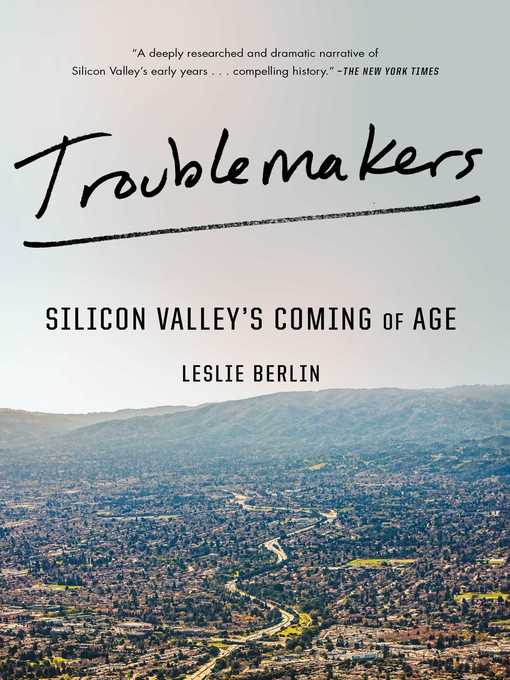
Troublemakers
Silicon Valley's Coming of Age
کتاب های مرتبط
- اطلاعات
- نقد و بررسی
- دیدگاه کاربران
نقد و بررسی

June 15, 2017
Five of the world's six most valuable companies are high-tech firms, and they were helped to the top by the six innovators profiled here: Mike Markkula, Apple Computer's first chair; Bob Taylor, the force behind the personal computer; Sandra Kurtzig, the first woman to take a technology company public; Al Alcorn, who engineered the first really big video game; Fawn Alvarez, who leapt from assembly line to executive power; and Niels Reimers, who streamlined the pass-along of academic breakthroughs to the public. Cluing us in: the Project Historian for the Silicon Valley Archives at Stanford University.
Copyright 2017 Library Journal, LLC Used with permission.

September 15, 2017
Looking back on Silicon Valley's early years, when magic was brewing in the suburbs of the Bay Area.Steve Jobs may have received most of the narrative oxygen coming out of Silicon Valley for the last quarter-century or so, with Elon Musk a close successor. However, as New York Times technology columnist Berlin (Project Historian/Stanford Univ. Silicon Valley Archives; The Man Behind the Microchip: Robert Noyce and the Invention of Silicon Valley, 2005, etc.) writes in this vigorous account, the first days were the hardest--and, all in all, involved the most interesting players. At the center of her narrative is Bob Taylor, a sometimes-prickly computer scientist who "kick-started the precursor to the Internet, the Arpanet." Though employed by Xerox for years, Taylor was committing to breaking "the stranglehold of mainframe computing" and evangelized for the vast possibilities of personal computers. Others picked up on his vision even as Taylor eventually broke with Xerox and early adapters discovered the many difficulties inherent in creating a useful PC. Mike Markkula, for one, worked quietly as Apple chairman to raise the quality and look of its products. "Markkula placed a high priority on first impressions," writes Berlin, "so high that Jobs would later say that it was Markkula who taught him to do the same." It's noteworthy, as the author notes, that Markkula's departure saw Apple grow increasingly lost in the wilderness throughout much of the 1980s and '90s. Some of the other visionaries Berlin profiles include Sandra Kurtzig, the pioneering entrepreneur who was the first woman CEO to take a Silicon Valley company public, and Al Alcorn, who masterminded the video game "Pong." Others earn less space but are no less influential, such as HP president John Young, who predicted in 1980 that Silicon Valley would replace manufacturing with research, thus making it the domain of "highly skilled professionals who can afford to live here"--which, of course, is just how things turned out. A sturdy, skillfully constructed work of business and technological history.
COPYRIGHT(2017) Kirkus Reviews, ALL RIGHTS RESERVED.

October 16, 2017
Stanford University archivist Berlin (The Man Behind the Microchip) focuses on key but largely overlooked figures who helped to fuel the expansion of the tech industry in the 1970s and 1980s in Silicon Valley. Among the seven subjects she profiles are Bob Taylor, who launched the Computer Science Laboratory at Xerox’s Palo Alto Research Center; Al Alcorn, who created Atari’s immensely successful Pong video game; Mike Markkula, Apple’s angel investor; and Sandra Kurtzig, a software entrepreneur and the first woman to take a tech company public. Berlin chronicles these pioneers’ arrivals in northern California and their accomplishments over the years, identifying two common traits in all seven: persistence and audaciousness. Taylor, for example, saw the need for computers to communicate with one another while working for government; he later moved to Silicon Valley, where he pushed to lay the foundation for today’s internet. The standout profile is of Markkula, who had cashed out his stock options from a stint at Intel when he met two guys named Steve tinkering in a garage in Los Altos and approached them with a business plan. Other sections pale in comparison to Markkula’s story. Berlin reveals another layer in the history of the Silicon Valley.

























دیدگاه کاربران